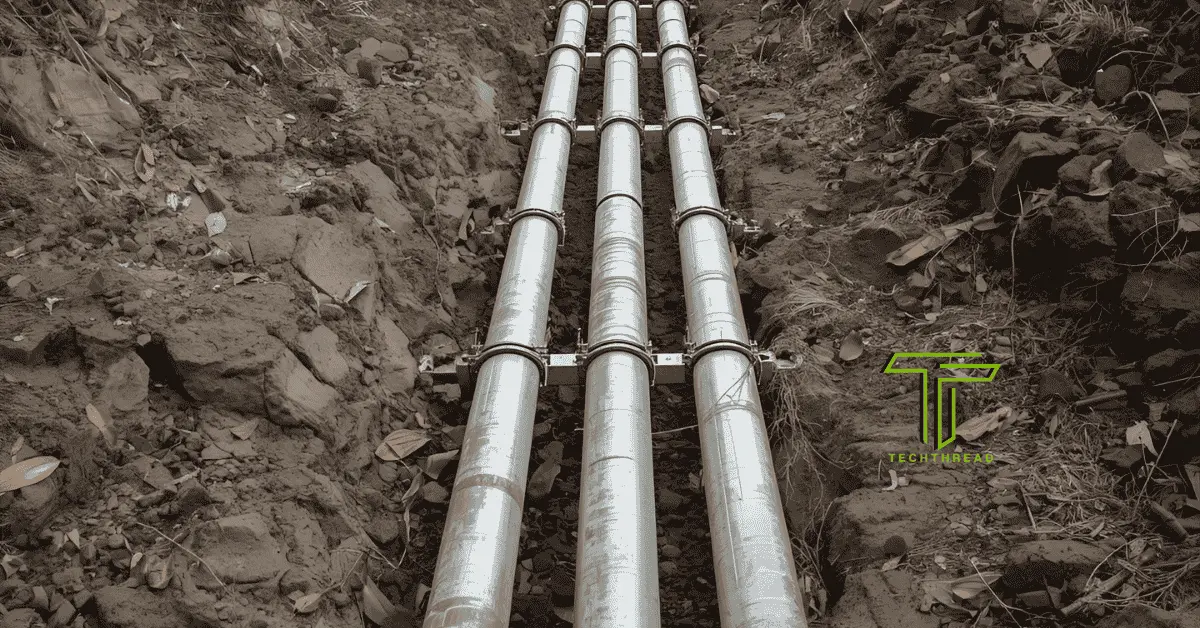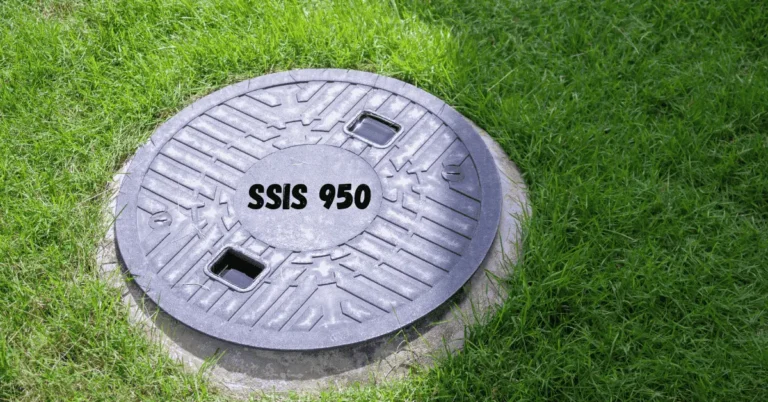Underground Electrical Conduit: Step-by-Step guide
Burying electrical wire isn’t just about digging a conduit. If it’s done wrong, it can lead to wire damage, electrical shorts, or even someone getting hurt. If you’re powering a shed, garage, or outdoor lights, you need to protect those wires properly.
That’s why underground electrical conduit is so important. It shields the wire from water, dirt, and pressure underground.
If you’re planning to do it yourself or just want to understand the basics, this will walk you through it clearly.
Table of Contents
What is an Electrical Conduit for Underground Use?
If you’re running wire underground, you can’t just dig a hole and drop a cable in it. That might work for a little time but over time, moisture, rocks, and shifting soil can damage it. That’s why conduit exists. It gives wires the protection they need to stay safe and work properly.
So what is conduit?
It’s a hollow tube, usually made of plastic or metal, that holds your wires and keeps them protected under ground. It is used in homes, businesses, farms, and anywhere underground wiring is needed.
Here’s why it matters:
- Protects wires from damage
- Prevents corrosion and wear
- Keeps you up to code
- Makes repairs easier
If you’re using THHN or THWN wire, conduit is required. These wires aren’t built for direct contact with soil and moisture, so they must be used in conduit.
You should consider conduit for:
- Running power to a shed, garage, or barn
- Outdoor lighting systems
- Pool or spa equipment
- Garden or irrigation pumps
Right Conduit for Underground Jobs
Different kind of conduit used for different kind of work. It depends on how much protection your wires need, how deep it would be buried, and what’s going on above the ground whether it’s foot traffic or parked cars. Here’s a simple guide to help you pick the right one:
Underground Electrical Conduit Types at a Glance
| Conduit Type | Best For | Strength | Key Features | Good to Know |
| Schedule 40 PVC | Yard lighting, sheds, home runs | Medium | Affordable, easy to cut and glue | Needs to be buried at least 18″ deep (per NEC Table 300.5) |
| Schedule 80 PVC | Under driveways or where extra protection is needed | Higher | Thicker wall than Schedule 40 | Better for high-traffic or rocky areas |
| Rigid Metal Conduit (RMC) | Commercial, garages, driveways | Very High | Handles pressure and impact | May require grounding and sealing to prevent rust |
| Intermediate Metal Conduit (IMC) | Heavy-duty but lighter than RMC | High | Tough but easier to handle | Often accepted in place of RMC by inspectors |
| HDPE Conduit | Long runs, telecom, flexible routes | Flexible | Handles curves, often used in utility work | Installed using fusion welding or special couplings |
| Fiberglass (RTRC) | High heat, corrosion-prone areas | Very High | Non-metallic, lightweight, heat-resistant | Used in industrial or specialty setups |
Understanding NEC Guidelines
You can’t just bury conduit at any depth and hope for the best. The National Electrical Code (NEC) sets rules that help keep buried wiring safe from damage. These rules aren’t suggestions they’re required by most local inspectors.
Here’s what you need to know about depth:
Minimum Burial Depths for Common Conduit Types (Based on NEC Table 300.5)
| Installation Type | Conduit Type | Minimum Burial Depth |
| Residential yards | PVC (Schedule 40 or 80) | 18 inches |
| Driveways or areas with traffic | Rigid Metal Conduit (RMC) | 6 inches |
| Under concrete slab | PVC or metal | 4–6 inches |
| Low-voltage landscape wiring | UF cable in PVC | 12 inches |
| Commercial/Industrial areas | Any approved conduit | 24 inches |
A Few Things to Keep in Mind
- Always call 811 before you dig. Utility companies will mark underground lines so you don’t hit anything.
- Most cities and counties require an inspection before you backfill the trench.
- Use warning tape 6–12 inches above the conduit in the trench so future digging won’t cause damage.
- For wet or flood-prone areas, you may need conduit with drainage holes or sealed connections to prevent water buildup.
How to Install Underground Electrical Conduit
It is not hard to install Underground electrical conduit if you follow the right steps. It’s mostly digging, putting pipe, and pulling wire but doing each part correctly.
Here’s a simple guide:
1. Plan Your Route
First figure out where the conduit will go.
- Mark a straight path from your main power source to the end where you want supply
- Keep the conduit away from trees, rocks, and plumbing lines
- If the trench needs to go under concrete, plan for a sleeve or deeper burial
2. Call Before You Dig
This step is critical. Dial 811 to have underground utilities marked.
Skipping this can lead to damaged water, gas, or power lines and big repair bills.
3. Dig the Trench
Use a trenching shovel or a trench machine if the job is big.
- Make the trench as deep as required by NEC rules (see the earlier section)
- The sides should be fairly straight to keep the conduit from shifting
- Remove any sharp rocks that could press into the conduit later
4. Lay the Conduit
Place the conduit into the trench, one piece at a time.
- PVC conduit connects with glue at each joint
- Metal conduit may need threaded connectors
- Use long, sweeping bends instead of sharp turns (this makes pulling wire easier)
- Add pull boxes if the run is longer than 100 feet or has more than two bends
5. Pull the Wires
Once the conduit is in place, feed the wire through.
- Use THWN or THHN wire, which is rated for use inside conduit
- For longer runs, use fish tape or a wire-pulling tool
- Make sure no wire gets nicked or cut damaged insulation can lead to future problems
6. Backfill the Trench
After your inspection (if needed), fill the trench carefully.
- Start with a layer of soft dirt or sand around the conduit
- Add warning tape a foot above the conduit
- Finish filling with soil and tamp it down gently
Conduit vs. Direct Burial
You might be wondering if you even need conduit at all. In some cases, you don’t. Direct burial cable, like UF (Underground Feeder) cable, is made to go straight into the ground without extra protection. But that doesn’t mean it’s always the best option.
Let’s compare both so you can decide what works for your setup.
When Direct Burial Makes Sense
- You’re running a short line in soft soil
- There’s no vehicle traffic above the trench
- You want to avoid extra costs or fittings
- The cable is UF-rated, which means it’s built to handle moisture and soil contact
What to watch out for:
- Hard soil or rocks can tear into the insulation over time
- Repairs are harder since the cable is exposed
- You can’t run THHN or THWN wire without a conduit
- It’s harder to upgrade or replace wiring later
Why Most Pros Still Choose Conduit
Electricians often recommend using underground electrical conduit even when UF cable is allowed.
Here’s why:
- Extra protection from water, roots, and digging
- Code compliance when individual wires are used
- Easier upgrades later without re-digging
- Helps prevent wear and corrosion over time
Quick Comparison
| Feature | Conduit | Direct Burial (UF Cable) |
| Protection | High (physical, moisture, impact) | Moderate (moisture-resistant only) |
| Repair & maintenance | Easier (pull new wire) | Harder (must dig up and replace) |
| Cost | Higher upfront | Lower upfront |
| Wire types supported | THHN, THWN, UF | UF only |
| Best use | Long runs, heavy loads, future-proofing | Short, low-risk runs in soft soil |
Smart Starts: Where to Use Conduit, What to Avoid, and When to Get Help
Underground electrical conduit shows up in more places than you might think. It’s not just for big jobs or commercial work. If you’re adding power outside your house, there’s a good chance you’ll need it.
Where You’ll See It Used
- Sheds and detached garages – to bring safe power from the main house
- Outdoor lighting or gate motors – to protect wiring from weather and animals
- Under walkways or driveways – to prevent crushed or damaged cables
- Garden pumps or irrigation timers – to keep wiring safe in wet soil
These setups all have one thing in common: they’re exposed to the elements. That’s where conduit makes a real difference.
Mistakes That Can Cost You
It’s easy to make small mistakes when you’re working underground electrical conduit. But small problems down there can turn into big headaches later.
Watch out for these:
- Skipping the 811 call – Hitting a buried gas or water line can shut your whole project down
- Choosing the wrong conduit – For example, using Schedule 40 under a driveway where Schedule 80 or metal is needed
- Shallow trenches – If it’s not buried deep enough, it might get damaged or fail inspection
- No expansion joints on PVC – Long runs without them can crack when temperatures change
Even if it looks good on the surface, if the work underground isn’t right, it can lead to power loss, shock risks, or costly do-overs.
When It’s Best to Call a Pro
Sometimes it’s just better to bring in an electrician. Especially if:
- You’re not sure what local code requires
- The trench needs to run close to other buried lines
- You’re connecting directly to the main panel
- You want everything checked and approved without delays
Conclusion
Installing underground electrical conduit isn’t just about following rules it’s about keeping your wiring safe for the long haul. Choosing the right materials, digging to the right depth, and taking your time with the work can save you major problems later.
If something feels unsure, it’s always worth checking the code or calling a pro. A solid setup now means fewer headaches in the future.
Also Read: Mastering DPDK in Pipeline Mode: Complete Setup & Optimization Guide







